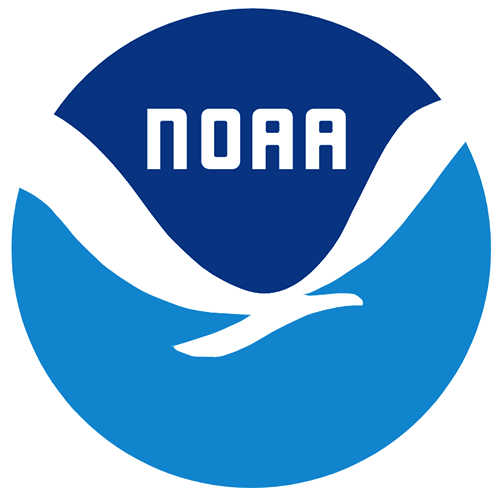2001 USACE LRE Topobathy Lidar: Lake Ontario (NY)
Welcome Guest ( Sign In )
NOAA
 NOAA Office for Coastal Management received the 2001 Lake Ontario dataset with 2 separate metadata records in 2013 on a hard-drive device from the USGS Center for LiDAR Information Coordination and Knowledge (CLICK); the first record was for the topographic portion of the shoreline from the USACE Detroit Office collected in May of 2001 and a second stating the USACE JALBTCX SHOALS system as having collected the bathymetric points for these same areas in August of 2001. The collection dates and GPS times correspond to each having successfully collected and delivered their respective areas. This record is a combination of the two and will highlight sections from both in order to create a complete and complementary metadata record. The original metadata records will be available by request only.
This data set is the raw topographic LIDAR data set. The data set contains selected base categories of geographic features, and characteristics of these features (X,Y,Z), in digital form. The X,Y represent geographic coordinates and the Z represents elevation in meters. The information was collected by EarthData International, LLC for the U.S. Army Corps of Engineers, Detroit District. This collection was done on the behalf of the Lake Ontario St. Lawrence River Study by the International Joint Commission.
These data were collected by the SHOALS (Scanning Hydrographic Operational Airborne Lidar Survey) system which consists of an airborne laser transmitter/receiver capable of measuring 400 soundings per second. The system operates from a deHavilland DHC-6 Twin Otter flying at altitudes between 200 and 400 meters with a ground speed of about 100 knots. The SHOALS system also includes a ground-based data processing system for calculating accurate horizontal position and water depth. Lidar is an acronym for LIght Detection And Ranging. The system operates by emitting a pulse of light that travels from an airborne platform to the water surface where a small portion of the laser energy is backscattered to the airborne receiver. The remaining energy at the water's surface propagates through the water column and reflects off the sea bottom and back to the airborne detector. The time difference between the surface return and the bottom return corresponds to water depth. The maximum depth the system is able to sense is related to the complex interaction of radiance of bottom material, incident sun angle and intensity, and the type and quantity of organics or sediments in the water column. As a rule-of-thumb, the SHOALS system should be capable of sensing bottom to depths equal to two or three times the Secchi depth.
This data set is an LAZ (compressed LAS) format file containing LIDAR point cloud data.
NOAA Office for Coastal Management received the 2001 Lake Ontario dataset with 2 separate metadata records in 2013 on a hard-drive device from the USGS Center for LiDAR Information Coordination and Knowledge (CLICK); the first record was for the topographic portion of the shoreline from the USACE Detroit Office collected in May of 2001 and a second stating the USACE JALBTCX SHOALS system as having collected the bathymetric points for these same areas in August of 2001. The collection dates and GPS times correspond to each having successfully collected and delivered their respective areas. This record is a combination of the two and will highlight sections from both in order to create a complete and complementary metadata record. The original metadata records will be available by request only.
This data set is the raw topographic LIDAR data set. The data set contains selected base categories of geographic features, and characteristics of these features (X,Y,Z), in digital form. The X,Y represent geographic coordinates and the Z represents elevation in meters. The information was collected by EarthData International, LLC for the U.S. Army Corps of Engineers, Detroit District. This collection was done on the behalf of the Lake Ontario St. Lawrence River Study by the International Joint Commission.
These data were collected by the SHOALS (Scanning Hydrographic Operational Airborne Lidar Survey) system which consists of an airborne laser transmitter/receiver capable of measuring 400 soundings per second. The system operates from a deHavilland DHC-6 Twin Otter flying at altitudes between 200 and 400 meters with a ground speed of about 100 knots. The SHOALS system also includes a ground-based data processing system for calculating accurate horizontal position and water depth. Lidar is an acronym for LIght Detection And Ranging. The system operates by emitting a pulse of light that travels from an airborne platform to the water surface where a small portion of the laser energy is backscattered to the airborne receiver. The remaining energy at the water's surface propagates through the water column and reflects off the sea bottom and back to the airborne detector. The time difference between the surface return and the bottom return corresponds to water depth. The maximum depth the system is able to sense is related to the complex interaction of radiance of bottom material, incident sun angle and intensity, and the type and quantity of organics or sediments in the water column. As a rule-of-thumb, the SHOALS system should be capable of sensing bottom to depths equal to two or three times the Secchi depth.
This data set is an LAZ (compressed LAS) format file containing LIDAR point cloud data.
